Rey’s Heroic Journey in The Force Awakens
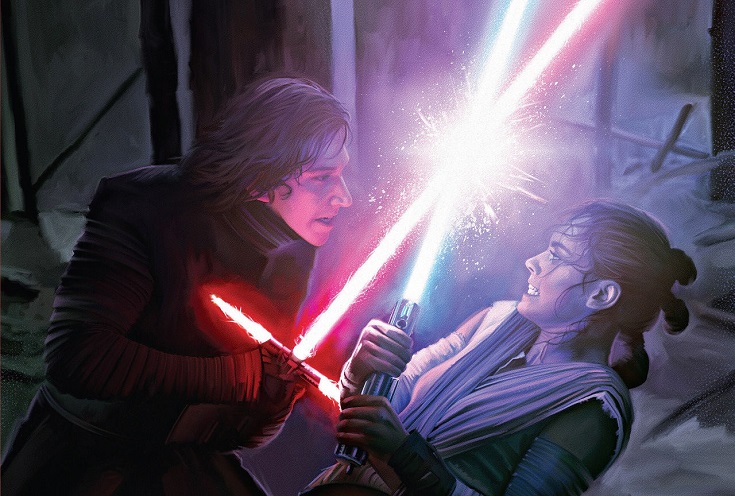 Star Wars: The Force Awakens has been a record-smashing box office success, a reinvigoration of the movie side of franchise for longtime fans, a launching point for new fans of all ages – and the origin story of a fan-favorite new character in Star Wars, Rey. The film’s plot structure and protagonist’s character arc also provide an excellent touchstone for examining one of the iconic features in discussions of storytelling: the Hero’s Journey.
Star Wars: The Force Awakens has been a record-smashing box office success, a reinvigoration of the movie side of franchise for longtime fans, a launching point for new fans of all ages – and the origin story of a fan-favorite new character in Star Wars, Rey. The film’s plot structure and protagonist’s character arc also provide an excellent touchstone for examining one of the iconic features in discussions of storytelling: the Hero’s Journey.
For the last few years, FANgirl’s ongoing series on the Heroine’s Journey has considered how existing visions of the Hero’s Journey should be updated and modified for mythic stories starring female protagonists while identifying and discussing some prominent and successful examples of Heroine’s Journeys in contemporary storytelling. Much remains to be analyzed in future posts about the implications of Rey, Star Wars, and The Force Awakens for the Heroine’s Journey; this post will focus on the classic Hero’s Journey framework.
 The Hero’s Journey, also called the monomyth, has been a subject of study and discussion for many years. For purposes of discussing Star Wars, two prominent formulations of the Hero’s Journey illustrate its influence on storytelling. One is the Hero’s Journey model set out in Joseph Campbell’s famous 1949 academic book, The Hero With a Thousand Faces. The other is the mythic structure model described by screenwriting and story consultant Christopher Vogler, initially in a 1985 memo written for Disney studio executives and later expanded and elaborated into his book The Writer’s Journey: Mythic Structure for Writers (third edition, 2007).
The Hero’s Journey, also called the monomyth, has been a subject of study and discussion for many years. For purposes of discussing Star Wars, two prominent formulations of the Hero’s Journey illustrate its influence on storytelling. One is the Hero’s Journey model set out in Joseph Campbell’s famous 1949 academic book, The Hero With a Thousand Faces. The other is the mythic structure model described by screenwriting and story consultant Christopher Vogler, initially in a 1985 memo written for Disney studio executives and later expanded and elaborated into his book The Writer’s Journey: Mythic Structure for Writers (third edition, 2007). 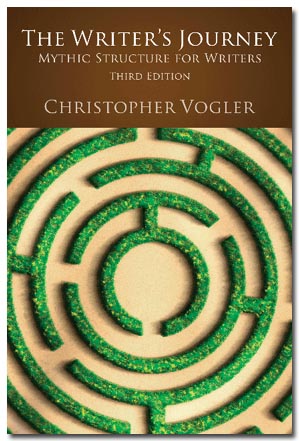 George Lucas drew substantially on Campbell’s ideas, especially in crafting the story and screenplay for the first Star Wars film. Like Lucas, Vogler graduated from USC’s film school and began studying and analyzing stories in the late 1970s, and he praises A New Hope as a perfect encapsulation of Campbell’s model.
George Lucas drew substantially on Campbell’s ideas, especially in crafting the story and screenplay for the first Star Wars film. Like Lucas, Vogler graduated from USC’s film school and began studying and analyzing stories in the late 1970s, and he praises A New Hope as a perfect encapsulation of Campbell’s model.
Both frameworks continue to heavily influence many contemporary storytellers. Campbell focused on synthesizing commonalities across the myths of numerous centuries and cultures, and his model has particular appeal to storytellers, like Lucas, who overtly wish to create stories with mythic themes and resonance with legends of the past. Vogler, on the other hand, sought to identify the underlying story structure which propels successful modern stories, particularly movies, and he illustrates the applicability of his model not only with mythical tales like The Wizard of Oz or The Lion King but also films as wide-ranging as Titanic, Pulp Fiction, The Full Monty, Beverly Hills Cop, and An Officer and a Gentleman. Campbell’s model divides the hero’s path into three phases of myth based upon the patterns synthesized from historical myths; Vogler’s model is based on the three-act structure which dominates modern movie-making. While the two Hero’s Journey models have many similarities, they also have some significant differences. Because The Force Awakens draws so heavily on the previous Star Wars films, especially the Original Trilogy and A New Hope in particular, it naturally shows a heavy influence of Campbell’s model just like Lucas’ initial work. At the same time, though, The Force Awakens is also a very contemporary movie, and it fits neatly into Vogler’s framework, as well.
Rey on Campbell’s Hero’s Journey
Rey’s character arc in The Force Awakens follows the stages of Campbell’s description of the monomyth very closely. Like many tales, the stages may not appear in the exact order they are laid out by Campbell, but each of the stages unfolds during Rey’s progress through the story.
The story begins in Rey’s mundane world on Jakku, where her daily routine consists of scavenging parts from starship wreckage and trading them for food with Unkar Plutt at Niima Outpost. After her meager dinner, though, Rey is propelled into her Call to Adventure. She hears BB-8’s objections to his capture by Teedo, and frees the droid. Initially she does not realize her life is transitioning away from her ordinary life; BB-8 keeps his mission classified and Rey’s decision not to sell him to Plutt is motivated by empathy for the droid’s insistence on waiting for his master. When BB-8 sees Finn in Poe’s jacket, the adventure truly begins: Rey learns BB-8 carries the crucial map to Luke Skywalker that must be taken to the Resistance before the First Order can seize it; she meets Finn and believes him to be a Resistance fighter who will assist in BB-8’s mission; the trio are attacked by the First Order, flee through the market, and ultimately escape in the Millennium Falcon after a harrowing firefight through the starship graveyard.
 But Rey has not committed to the heroic path just yet. Her Refusal of the Call occurs first when she tells Finn that she will return to Jakku after the mission to deliver BB-8 to the Resistance base is completed. Later, she turns down a job offer from Han Solo for the same reason. Only later in her story arc does Rey accept that she has no reason to return to her home on Jakku.
But Rey has not committed to the heroic path just yet. Her Refusal of the Call occurs first when she tells Finn that she will return to Jakku after the mission to deliver BB-8 to the Resistance base is completed. Later, she turns down a job offer from Han Solo for the same reason. Only later in her story arc does Rey accept that she has no reason to return to her home on Jakku.
Almost immediately after their successful escape from the First Order, Rey meets the mentor figure, Han Solo, who renders Supernatural Aid on her journey. Unlike the classic mentor figure of a wizard with magical powers, Rey’s guide does not personally hold supernatural abilities. But Han’s conversation with the youngsters aboard the Falcon validates the key supernatural elements of Rey’s journey: the Force is real, the light side and the dark side exist, and the stories about the Jedi and the heroes of Rebellion are true. Han also gifts Rey with a talisman that will aid her quest: the silver pistol she fires on Takodana, and ultimately carries with her to meet Luke Skywalker in his seclusion.
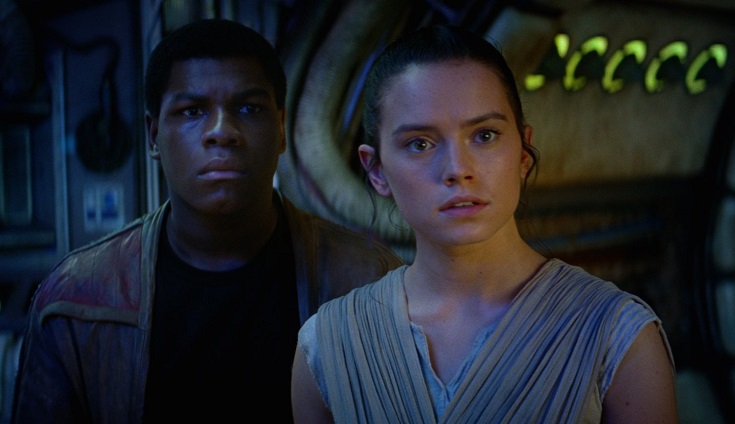 The moment when Rey’s story leaves the mundane world behind and enters the field of adventure, The Crossing of the First Threshold, occurs when the Falcon arrives at Takodana and the group enters Maz Kanata’s castle. Rey’s discovery of the immense green visuals and entirely new smells marks a stark break from her prior life.
The moment when Rey’s story leaves the mundane world behind and enters the field of adventure, The Crossing of the First Threshold, occurs when the Falcon arrives at Takodana and the group enters Maz Kanata’s castle. Rey’s discovery of the immense green visuals and entirely new smells marks a stark break from her prior life.
Part of the separation from the mundane world involves a process of metamorphosis into a hero, which Campbell calls The Belly of the Whale. In The Force Awakens, the imagery is quite literal. First, Han’s gargantuan freighter swallows up the Falcon much like familiar imagery of Jonah and the whale. Soon after, Rey and Finn crawl around in the tunnels within the freighter. Rey’s metamorphosis into a hero also progresses here: she devises a plan to help Han repel the two gangs, figures out how to use the blast door to save Finn from the rathtar, and assists Han in executing the Falcon’s hyperspace jump from the freighter’s hangar to escape.
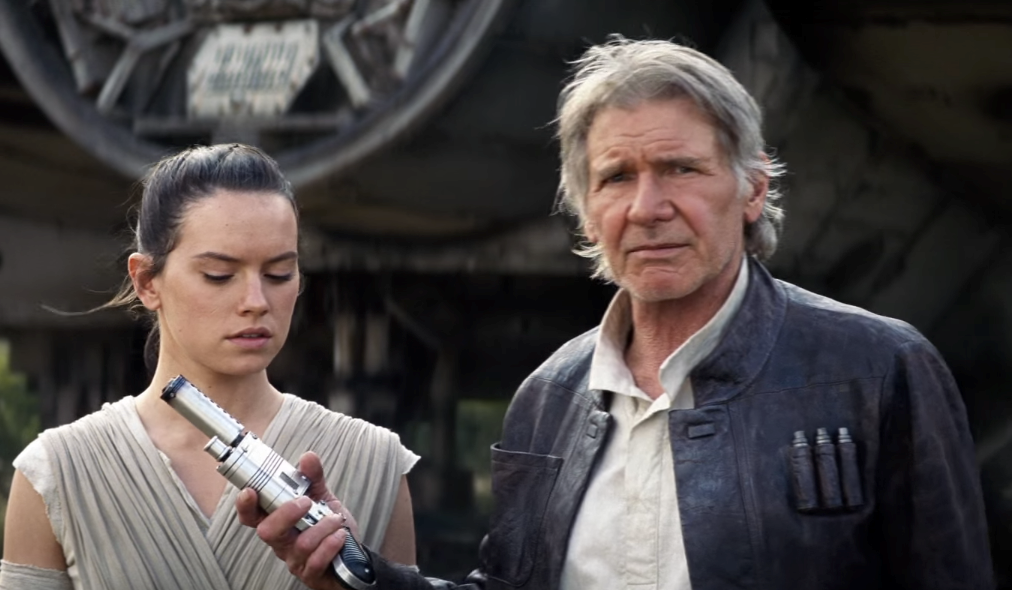 At this point the first phase of Campbell’s model, the Departure, has come to an end. The next phase, the Initiation, has begun.
At this point the first phase of Campbell’s model, the Departure, has come to an end. The next phase, the Initiation, has begun.
Developing into a hero does not come easy. The Road of Trials repeatedly tests the hero, and the hero may fail one or more of them. After learning of the importance of the fight against the dark side, Rey hears cries for help that lead her to the hidden lightsaber in the catacombs. The vision in the Force provides Rey with information, but also tests her resolve. She fails this test, telling Maz that she wants no part of the Force and rejecting the offer to take the lightsaber. Rey flees into the woods, where she tells BB-8 that she will not be participating further in the mission to return him to the Resistance. Her plans quickly change, though, when the First Order begins to attack. Rey returns to the castle, engaging with stormtroopers and then Kylo Ren. Despite her best efforts, the dark knight reads her mind, realizes she has seen the map he seeks, and uses the Force to knock her unconscious to abduct her.
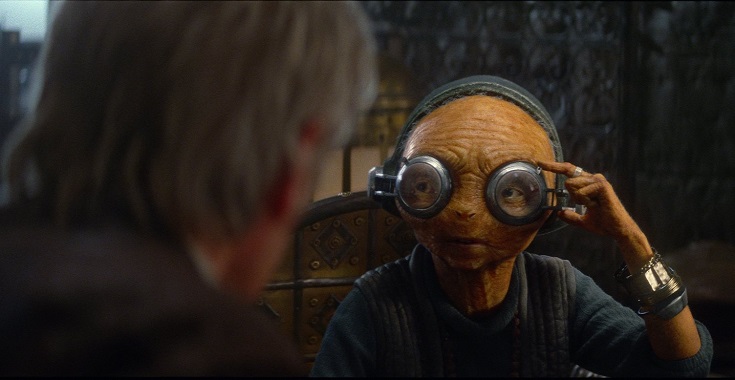 Based on the male-protagonist focus of the historical myths he studied and the commonalities they frequently involved, Campbell’s model uses gendered labels to identify several common stages within the hero’s trials. One is The Meeting With the Goddess. For Rey, this takes place during her conversation with Maz in the catacombs after her Force vision. Although Rey does not accept the unconditional love from the Force that Maz opens to her, the moment pays dividends for Rey later in the story. Similarly, the hero often is offered the opportunity to abandon the quest, which Campbell calls Woman as Temptress. In Rey’s story, of course, the roles are flipped: it is the male character, Finn, who asks Rey to give up the mission to return BB-8 to the Resistance and instead run away with him to the safety of the Outer Rim. The importance of both of these moments to Rey’s story is underlined by the accompanying music in the film’s score: “Maz’s Counsel” and “Finn’s Confession,” respectively. In addition, The Atonement With the Father denotes the confrontation with a figure of ultimate power whom the hero must overcome. Kylo Ren is not a god or a paternal figure to Rey, but he is her supernatural adversary in the story. At Starkiller Base, he holds her prisoner and once again tries to read her mind to obtain the map. This time, though, Rey turns the tables in their confrontation, realizing she can use the Force not only to repel Kylo Ren from her mind, but also to enter his mind and discover his greatest fear.
Based on the male-protagonist focus of the historical myths he studied and the commonalities they frequently involved, Campbell’s model uses gendered labels to identify several common stages within the hero’s trials. One is The Meeting With the Goddess. For Rey, this takes place during her conversation with Maz in the catacombs after her Force vision. Although Rey does not accept the unconditional love from the Force that Maz opens to her, the moment pays dividends for Rey later in the story. Similarly, the hero often is offered the opportunity to abandon the quest, which Campbell calls Woman as Temptress. In Rey’s story, of course, the roles are flipped: it is the male character, Finn, who asks Rey to give up the mission to return BB-8 to the Resistance and instead run away with him to the safety of the Outer Rim. The importance of both of these moments to Rey’s story is underlined by the accompanying music in the film’s score: “Maz’s Counsel” and “Finn’s Confession,” respectively. In addition, The Atonement With the Father denotes the confrontation with a figure of ultimate power whom the hero must overcome. Kylo Ren is not a god or a paternal figure to Rey, but he is her supernatural adversary in the story. At Starkiller Base, he holds her prisoner and once again tries to read her mind to obtain the map. This time, though, Rey turns the tables in their confrontation, realizing she can use the Force not only to repel Kylo Ren from her mind, but also to enter his mind and discover his greatest fear.
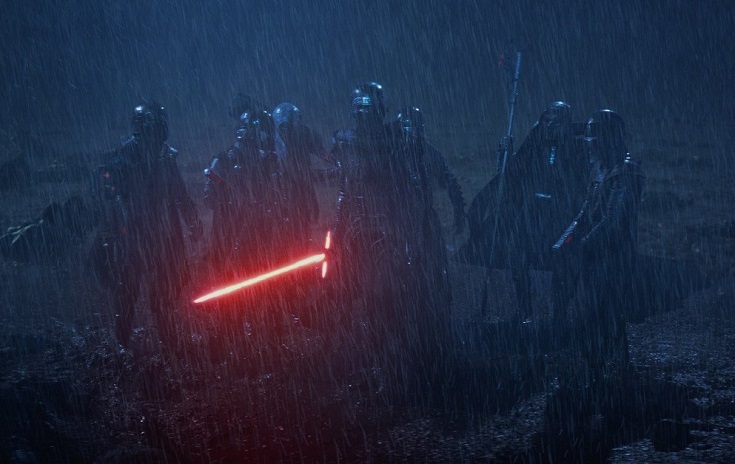 The culmination of Campbell’s second phase occurs when the hero accomplishes the goal of the quest. The hero’s Apotheosis reflects a literal or metaphorical death or attainment of a state of divine knowledge or bliss. After Kylo Ren has fled his failure, Rey realizes she can turn her newfound power to her advantage. Calmly she mind-tricks a stormtrooper into releasing her, allowing her to escape into the depths of Starkiller Base.
The culmination of Campbell’s second phase occurs when the hero accomplishes the goal of the quest. The hero’s Apotheosis reflects a literal or metaphorical death or attainment of a state of divine knowledge or bliss. After Kylo Ren has fled his failure, Rey realizes she can turn her newfound power to her advantage. Calmly she mind-tricks a stormtrooper into releasing her, allowing her to escape into the depths of Starkiller Base.
The hero’s triumph is The Ultimate Boon, when the purpose of the adventure is fulfilled. In the forest, Rey again faces Kylo Ren and achieves a two-fold boon. First, the Force delivers the lightsaber to her hand, endowing her with the weapon she had vowed never to touch again. Then, at the edge of a literal precipice in their duel, her enemy’s words remind Rey of Maz’s counsel; she closes her eyes, allows the light of the Force to grow within her, and seizes her destiny. With the Force flowing through her and guiding her actions, Rey quickly turns the duel in her favor.
The successful accomplishment of the quest is not the end of the story in Campbell’s model, however. In the third phase, the Return, the hero must internalize the lessons learned on the adventure and reintegrate back into the mundane world.
Unlike some heroes, Rey does not have a stark Refusal of the Return as overt as her Refusal of the Call at the story’s start. After defeating Kylo Ren and being separated from him by the chasm ripped into forest between them, though, Rey does not make every effort to escape the planet’s death-throes. Rather, she runs to Finn’s side and cries over his unconscious form, apparently willing to accept her own death along with his.
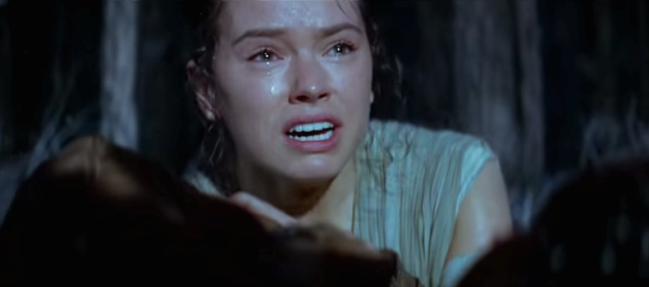 The hero frequently is assisted in making the return. Rey experiences The Magic Flight when Chewbacca arrives in the Millennium Falcon, beams shining down into the darkened forest like the light of a guardian angel. The Wookiee’s arrival also represents a Rescue From Without that enables her return.
The hero frequently is assisted in making the return. Rey experiences The Magic Flight when Chewbacca arrives in the Millennium Falcon, beams shining down into the darkened forest like the light of a guardian angel. The Wookiee’s arrival also represents a Rescue From Without that enables her return.
Reaching the mundane world again often is not easy for the hero. Rey marks The Crossing of the Return Threshold when she arrives at the Resistance base and shares an emotional embrace with Leia. The hero becomes the Master of Two Worlds by synthesizing both the heroic and the mundane in her existence. For Rey, her change of clothes into her Resistance outfit signifies her new role in the mundane world; her farewell with Leia and acknowledgement of the blessing “may the Force be with you” represents her acceptance of her new spiritual role as the first new Jedi apprentice in the galaxy in years. Finally, the hero achieves the Freedom to Live by rejecting the fear of death or regrets about the past. In the catacombs, Maz Kanata had advised Rey to let go of the past and choose the belonging of the future. When Rey arrives at the first Jedi temple and reaches Luke Skywalker, she offers him the lightsaber to signify her decision to embark upon the path ahead of her.
Rey in Vogler’s Mythic Structure
Although Vogler’s model, like Campbell’s, has three major segments, the two frameworks break out those divisions within the story quite differently. Accordingly, while the initial stages appear very similar, the later elements vary significantly.
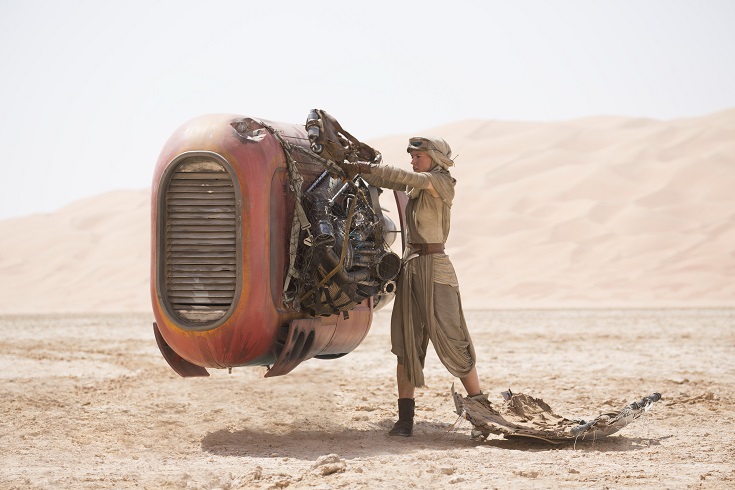 Act One of Rey’s story unfolds in Vogler’s model essentially as described above for Campbell’s. Rey’s story begins in The Ordinary World of her scavenger life on Jakku. Her Call to Adventure (Inciting Incident) occurs when she rescues BB-8 and is drawn, along with Finn, into the droid’s mission to deliver the map to Luke Skywalker to the Resistance. Her Refusal of the Call (The Reluctant Hero) arises from her emotional commitment to remaining on Jakku to wait for her family to return for her. Her Mentor, Han Solo, guides her quest by affirming that the Force and the Jedi are real. Rey is Crossing the First Threshold, like Dorothy setting off on the Yellow Brick Road, when she commits to taking the Millennium Falcon across space to bring BB-8 back to the Resistance.
Act One of Rey’s story unfolds in Vogler’s model essentially as described above for Campbell’s. Rey’s story begins in The Ordinary World of her scavenger life on Jakku. Her Call to Adventure (Inciting Incident) occurs when she rescues BB-8 and is drawn, along with Finn, into the droid’s mission to deliver the map to Luke Skywalker to the Resistance. Her Refusal of the Call (The Reluctant Hero) arises from her emotional commitment to remaining on Jakku to wait for her family to return for her. Her Mentor, Han Solo, guides her quest by affirming that the Force and the Jedi are real. Rey is Crossing the First Threshold, like Dorothy setting off on the Yellow Brick Road, when she commits to taking the Millennium Falcon across space to bring BB-8 back to the Resistance.
 Act Two in Vogler’s model begins in a similar place as Campbell’s model. The hero’s Tests, Enemies, and Allies involve a set of experiences through which the hero learns the rules of the Special World and faces challenges that must be overcome. First, Han’s freighter is attacked by enemies, the two gangs. Rey initially makes things worse by freeing the rathtars while trying to help, then successfully rescues Finn from one of the monster’s clutches. The group escapes the danger by jumping to lightspeed from within the hangar after Rey reminds Han about the compressor. Second, Rey meets a new ally, Maz Kanata, at the diminutive pirate’s castle. Like Luke’s experiences in the Mos Eisley Cantina in A New Hope, Maz’s castle is a bustling, alien-filled location where Rey begins to learn the new rules of the Special World. Rey passes one test when she rejects Finn’s suggestion to abandon BB-8’s mission and flee to the Outer Rim; she fails another test when, after her vision in the Force, she rejects Maz’s urging to take the lightsaber. Third, Rey fights new enemies in the Takodana woods when she engages the First Order stormtroopers and then Kylo Ren. Bested by Kylo Ren, she falls unconscious and is taken prisoner.
Act Two in Vogler’s model begins in a similar place as Campbell’s model. The hero’s Tests, Enemies, and Allies involve a set of experiences through which the hero learns the rules of the Special World and faces challenges that must be overcome. First, Han’s freighter is attacked by enemies, the two gangs. Rey initially makes things worse by freeing the rathtars while trying to help, then successfully rescues Finn from one of the monster’s clutches. The group escapes the danger by jumping to lightspeed from within the hangar after Rey reminds Han about the compressor. Second, Rey meets a new ally, Maz Kanata, at the diminutive pirate’s castle. Like Luke’s experiences in the Mos Eisley Cantina in A New Hope, Maz’s castle is a bustling, alien-filled location where Rey begins to learn the new rules of the Special World. Rey passes one test when she rejects Finn’s suggestion to abandon BB-8’s mission and flee to the Outer Rim; she fails another test when, after her vision in the Force, she rejects Maz’s urging to take the lightsaber. Third, Rey fights new enemies in the Takodana woods when she engages the First Order stormtroopers and then Kylo Ren. Bested by Kylo Ren, she falls unconscious and is taken prisoner.
 The remaining stages of Vogler’s Act Two mark the start of his major divergence from Campbell. The Approach to the Inmost Cave brings the hero to the second threshold in the story, often the enemy headquarters or the most dangerous place in the Special World. In A New Hope, the Falcon is drawn into the Death Star. In The Force Awakens, Rey is held prisoner at Starkiller Base.
The remaining stages of Vogler’s Act Two mark the start of his major divergence from Campbell. The Approach to the Inmost Cave brings the hero to the second threshold in the story, often the enemy headquarters or the most dangerous place in the Special World. In A New Hope, the Falcon is drawn into the Death Star. In The Force Awakens, Rey is held prisoner at Starkiller Base.
Soon the hero must endure an Ordeal, a point where the hero’s fortunes are at their worst and the audience fears the hero may die, or even believes he does die, only to experience exhilaration when the hero somehow survives. In A New Hope, this is marked by the famous trash compactor sequence, when Luke is nearly drowned by the dianoga before being suddenly freed as the walls begin to close. In The Force Awakens, Rey is brutally interrogated by Kylo Ren. Poe Dameron was only spared by Finn’s unexpected rescue, and no one is available to save Rey. It appears the villain will triumph, obtaining the map to Luke Skywalker and defeating Rey’s goal of ensuring the Resistance gets it first. The harder Kylo Ren pushes to dig the map from her mind, however, the harder Rey pushes back, and he is unable to compel her mind to open up to him.
After surviving the Ordeal, the hero can claim the Reward (Seizing the Sword) of the quest. This can mean obtaining a physical treasure, or a more metaphorical prize such as knowledge or experience the hero needs. In A New Hope, Luke rescues Leia from the Empire’s prison and the Rebels escape the Death Star with the plans that are key to its destruction. In The Force Awakens, Rey ultimately turns her own strength in the Force against Kylo Ren, expelling him from her mind, discovering his fear that his powers are not strong enough, and shaking his confidence so greatly that he leaves the room and pleads to Supreme Leader Snoke for guidance in breaking her. In his absence, Rey wields her powers against a stormtrooper and escapes the cell.
Act Three of Vogler’s model is not about winding down the adventure, as in Campbell’s framework, but rather about driving the story onward to its climactic conclusion. By surviving the Ordeal and obtaining the Reward, the hero has only made the adversaries more insistent upon defeating her.
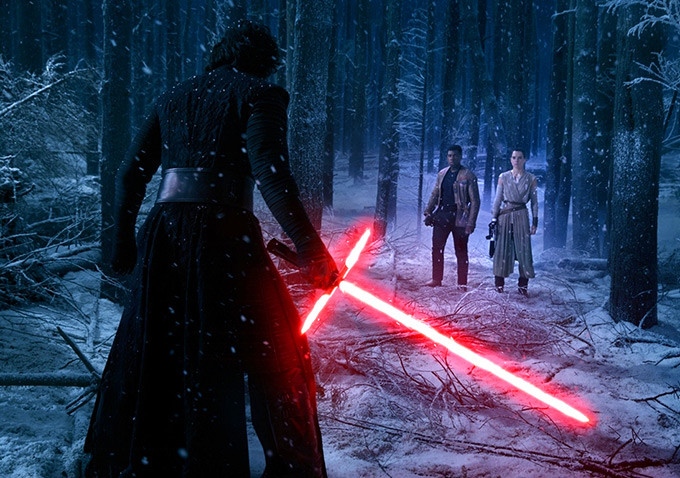 The hero is often pursued ruthlessly on The Road Back, and Vogler notes that some of the best chase sequences in movies occur at this point the story as the villain’s forces try to stop the hero from getting away with the Reward or otherwise escaping their clutches. While the destruction of the TIE fighters to escape the Death Star and reach the Rebel base at Yavin is a fairly short sequence in A New Hope, Rey’s road back is more extensive in The Force Awakens. First, she must sneak through Starkiller Base, avoiding the many stormtroopers Kylo Ren has dispatched to find her. After reuniting with Finn, Han, and Chewie, the group initially plans to leave Starkiller Base on the Falcon with their mission to rescue Rey and take down the base’s shields accomplished – but the mentor realizes the attack on the oscillator is failing, and suggests they use their explosives to help. Using her familiarity with their technology from her years scavenging Imperial wrecks, Rey disables the locks to enable Han and Chewie to enter the oscillator building. She and Finn arrive at the building to reunite the group and depart, but Rey watches as her road back is imperiled by Kylo Ren’s murder of Han. In the forest, Kylo Ren makes his objective in blocking their road back explicit, declaring “We’re not finished yet.”
The hero is often pursued ruthlessly on The Road Back, and Vogler notes that some of the best chase sequences in movies occur at this point the story as the villain’s forces try to stop the hero from getting away with the Reward or otherwise escaping their clutches. While the destruction of the TIE fighters to escape the Death Star and reach the Rebel base at Yavin is a fairly short sequence in A New Hope, Rey’s road back is more extensive in The Force Awakens. First, she must sneak through Starkiller Base, avoiding the many stormtroopers Kylo Ren has dispatched to find her. After reuniting with Finn, Han, and Chewie, the group initially plans to leave Starkiller Base on the Falcon with their mission to rescue Rey and take down the base’s shields accomplished – but the mentor realizes the attack on the oscillator is failing, and suggests they use their explosives to help. Using her familiarity with their technology from her years scavenging Imperial wrecks, Rey disables the locks to enable Han and Chewie to enter the oscillator building. She and Finn arrive at the building to reunite the group and depart, but Rey watches as her road back is imperiled by Kylo Ren’s murder of Han. In the forest, Kylo Ren makes his objective in blocking their road back explicit, declaring “We’re not finished yet.”
 The journey reaches its apex in the Resurrection (Climax) of the story. Vogler describes this as the villain’s last shot before being defeated, often a second life-or-death moment in addition to the Ordeal. It is the third threshold on the journey, the hero’s final test in which the lessons learned must be brought to bear to succeed. In A New Hope, the trench run is going very poorly for the Rebels, and it appears Luke is about to be killed by Darth Vader when Han’s unexpected return saves him at the last moment; Luke then listens to the ghostly wisdom of his mentor, closes his eyes, and fires the torpedoes that destroy the Death Star. In The Force Awakens, Rey duels Kylo Ren in the forest. At first she is overpowered, constantly retreating from his onslaught and unskilled with swordfighting techniques to use against him. Sabers clashing at the end of the cliff, it seems she is on the brink of defeat until Kylo Ren’s offer to teach her the ways of the Force reminds her of Maz’s counsel. She closes her eyes, draws on the Force, and uses its guidance to defeat her adversary.
The journey reaches its apex in the Resurrection (Climax) of the story. Vogler describes this as the villain’s last shot before being defeated, often a second life-or-death moment in addition to the Ordeal. It is the third threshold on the journey, the hero’s final test in which the lessons learned must be brought to bear to succeed. In A New Hope, the trench run is going very poorly for the Rebels, and it appears Luke is about to be killed by Darth Vader when Han’s unexpected return saves him at the last moment; Luke then listens to the ghostly wisdom of his mentor, closes his eyes, and fires the torpedoes that destroy the Death Star. In The Force Awakens, Rey duels Kylo Ren in the forest. At first she is overpowered, constantly retreating from his onslaught and unskilled with swordfighting techniques to use against him. Sabers clashing at the end of the cliff, it seems she is on the brink of defeat until Kylo Ren’s offer to teach her the ways of the Force reminds her of Maz’s counsel. She closes her eyes, draws on the Force, and uses its guidance to defeat her adversary.
The final stage of Vogler’s model is the Return With the Elixir (Denouement), in which the hero’s triumph is shown. In A New Hope, Luke has destroyed the Death Star, Darth Vader is defeated, and Luke receives a medal of heroism from the Rebellion. In The Force Awakens, Rey escapes from imploding Starkiller Base with unconscious Finn and the lightsaber, arrives at the Resistance base, and learns that BB-8 and R2-D2 can assemble the entire map. Rey has achieved the adventure she originally embarked upon – and more, she has learned that she has a destiny she had never imagined for herself.
Interestingly, The Force Awakens also includes an Epilogue which provides resolution to the other part of Rey’s journey. Vogler notes that such epilogues often can be effective to look ahead from the main ending of the story, showing how events turned out for the characters in the future, as in American Graffiti, Terms of Endearment, or A League of Their Own. In The Force Awakens, the core adventure ends with the successful assembly of the map – the accomplishment of the goal of the quest. But Rey also knows that she is destined to be a Jedi, and that it is her responsibility to find Luke and seek his training. The epilogue jumps ahead in time: Rey now wears her Resistance outfit, and Leia more regal attire than her general’s uniform; Finn is recuperating in the medical ward; at the farewell, Poe wears an officer’s uniform and C-3PO’s red arm has been replaced with the proper gold one. Most importantly, the epilogue shows Rey, Chewbacca, and R2-D2 following the map to the ocean world where Luke is in seclusion, and Rey climbing up the steps of the first Jedi temple to find the long-lost Jedi Master. This delivers denouement on Rey’s spiritual journey in the movie, and lets the audience know that her adventures are only beginning.
The Future of Rey’s Journey
After The Force Awakens, the nature of Rey’s heroic journey still has a substantial unknown at its core: will her arc remain hewed to the classic Hero’s Journey framework, or will Lucasfilm use the astounding box office success of The Force Awakens as leverage to deliver a modern, potentially iconic and standard-setting Heroine’s Journey for the Sequel Trilogy’s signature protagonist? In many respects, the Hero and Heroine models have great similarity. In some of the ways they tend to differ, though, Rey’s story has yet to set her apart. For example, it is too early to tell if Rey has been envisioned as a nurturing hero as distinct from a conquering hero, or if romantic love will serve as a source of strength to pursue her quest rather than a distraction from it. Another favorite feature of most prominent Heroine’s Journey arcs is a loyal team of allies who assist and support the heroine in her success: the Scooby Gang across seven season of Buffy the Vampire Slayer, Team Katniss in The Hunger Games book and movie trilogies, Team Avatar in the four seasons of The Legend of Korra, Peggy’s group of allies in Agent Carter and Kara’s friends and allies in Supergirl, and more. 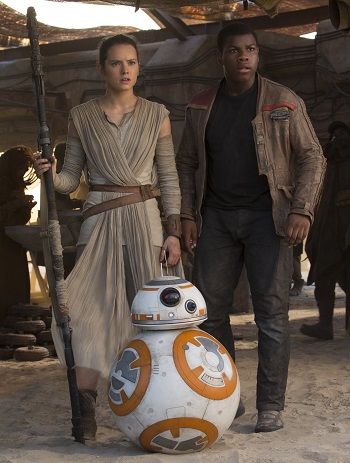 While Rey has allies at various stages of her journey in The Force Awakens, the movie ends without a Team Rey definitively assembled for the future: of her two biggest allies, Finn remains unconscious and Han is dead; BB-8 flew with Poe at Starkiller Base and stays behind with Leia when Rey departs; in the movie Rey and Poe have not even officially met, though they share a few spare lines of dialogue in the novelization; R2-D2 seems to have travelled with her to see his old Master Luke, not because of any newfound attachment to Rey; and only Chewbacca appears committed to being Rey’s companion going forward. Perhaps Rey has been created more in the mold of sole hero like Luke in the Original Trilogy. Only time will tell.
While Rey has allies at various stages of her journey in The Force Awakens, the movie ends without a Team Rey definitively assembled for the future: of her two biggest allies, Finn remains unconscious and Han is dead; BB-8 flew with Poe at Starkiller Base and stays behind with Leia when Rey departs; in the movie Rey and Poe have not even officially met, though they share a few spare lines of dialogue in the novelization; R2-D2 seems to have travelled with her to see his old Master Luke, not because of any newfound attachment to Rey; and only Chewbacca appears committed to being Rey’s companion going forward. Perhaps Rey has been created more in the mold of sole hero like Luke in the Original Trilogy. Only time will tell.
In the meantime, while Rey’s story in The Force Awakens matches nicely with both Campbell’s and Vogler’s frameworks for heroic journeys, we know one thing for certain about the future of her heroic journey: it is far from over. Unlike George Lucas crafting Luke’s journey in A New Hope, uncertain whether he would ever be able to revisit the character’s further adventures, the creators of Rey’s story knew from the beginning that they were devising a character whose progression would span a movie trilogy. Though Lucas was able to draw upon Campbell’s model in forming the stories for The Empire Strikes Back and Return of the Jedi to complete Luke’s trilogy, for Rey’s journey Lucasfilm had the luxury of being able to sketch out the broad arcs of Episodes VIII and IX long before those screenplays would be written. In many ways, the task facing J.J. Abrams, Lawrence Kasdan, and Michael Arndt with Rey was more comparable to storytellers like Suzanne Collins with Katniss Everdeen or J.K. Rowling with Harry Potter, designing a series of tales from the start, though with the added complexity in Star Wars of passing the baton to future screenwriters and directors rather than a sole storyteller throughout. Even so, the development process of the Sequel Trilogy not only enabled Episode VII to lay the groundwork for events or character beats that today’s audiences cannot foresee with only The Force Awakens revealed to us, but also greatly increased the opportunity for an integrated, synthesized heroic arc across the Sequel Trilogy films in a manner that the ad hoc writing of the Original Trilogy – and to a large extent Lucas’ Prequel Trilogy, as well – did not permit. Whatever the future stories bring to Rey, hopefully the advance planning will pay big dividends.
For more discussion of the Hero’s Journey in The Force Awakens, check out our special edition episode of Hyperspace Theories:

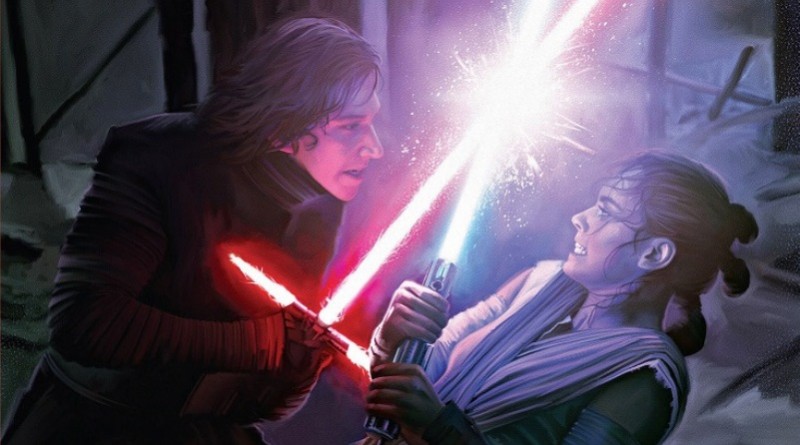







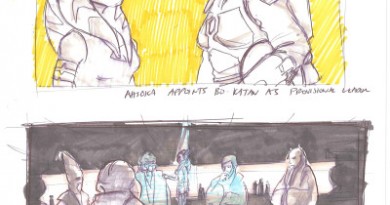
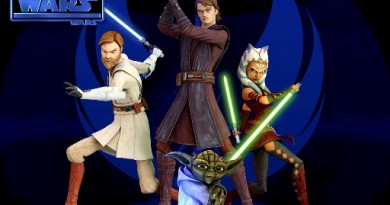
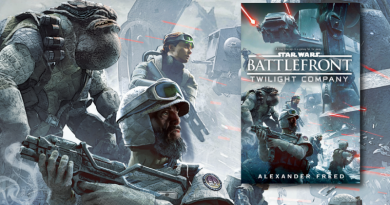
Pingback:Rey and the Hero’s Journey in The Force Awakens on Hyperspace Theories – Fangirls Going Rogue
Pingback:Hyperspace Theories Special Edition: Rey and the Hero’s Journey in The Force Awakens – FANgirl Blog
Pingback:March 2016 Preview – FANgirl Blog
Tons of hero’s journey movie breakdowns at https://www.youtube.com/user/clickokDOTcoDOTuk/videos ; Kal Bashir’s 2100+ stage Hero’s Journey And Transformation Through A New World / State
That’s a very nice article! I was trying to breakdown TFA by the rules of the Monomyth as well. The amazing thing I concluded was that the script has 2 heroes: Rey and Finn, and from the first trailers, it seemed as Finn would be the main hero (fighting Ren in the end).
But as you mentioned: Rey’s journey will be spread over a trilogy, as with for example Frodo in Lotr. To me, the real Call to Adventure happens when Rey has the vision, with Maz (herald) telling her that the Force is calling to her. The first call of BB8 seems like a minor call to get her in position for the big call. And the end of the movie really seems like the meeting with the true mentor.
As for Finn: the call would seem when he’s asked for ‘gun examination’ and escapes with Poe.
Fun fact is how the poster also sells the idea of Finn being the new Jedi Hero, but the fact that he’s not centered, already gave away that it’s putting viewers on the wrong foot.
By the way: what’s your guess on who Rey really is? I strongly believe it’s Anakin. Luke crying seems like he’s overwhelmed by what he’s been saying since ROTJ: “There is still good in him..”, and Rey being the ‘good’ of Anakin in a new body. Also her vision shows images of Cloud City, where Darth Vader was first confronted in real life with his son, and took his hand and that specific lightsaber. The circle would seem complete: they finally meet again in real life, but this time, Anakin/Rey returns the lightsaber instead of taking it.
Pingback:The Heroine’s Journey in Supergirl (CBS/CW Television) – FANgirl Blog
Pingback:Finn and the Hero’s Journey in The Force Awakens – FANgirl Blog
Pingback:The Last Jedi’s Unexpected Star Wars Story Structure – FANgirl Blog
Pingback:The Last Jedi and the Hero’s Journey – Part One: Rey – FANgirl Blog